CBS News
Annette Schnee and Bobbie Jo Oberholtzer killings: How a pair of orange socks connected two Colorado cold case murders committed on the same day in 1982
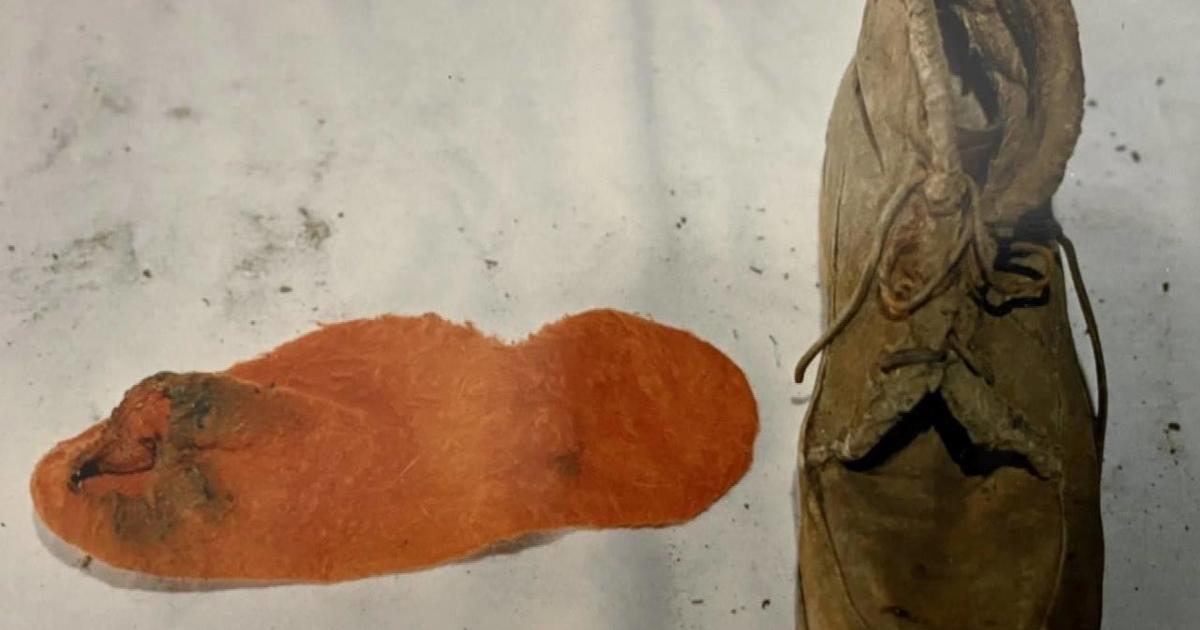
The day after Bobbie Jo Oberholtzer disappeared in January 1982, her body was found on the side of a snowbank on Hoosier Pass — 10 miles outside Breckenridge, Colorado. She had tragically been shot. Six months later, the body of Annette Schnee was also found, about 10 miles south in a desolate area — lying face down in a stream. She had also been shot. As “48 Hours” contributor Natalie Morales reports, the mystery of what happened to these two young women would haunt their families and investigators for years.
BOBBIE JO OBERHOLTZER
Det. Sgt. Wendy Kipple: Every day that I made this drive and got to see all the scenery, and the sunrises and sunsets, and especially from the top of Hoosier, it’s like “I am so lucky to live here.”
But for 40 years, the towering, craggy Rockies outside Breckenridge, Colorado, held a dark and silent secret: the unsolved murders of Annette Schnee and Bobbie Jo Oberholtzer. They would define the career of now Park County Detective Sergeant Wendy Kipple. But back in 1982, when both women were killed —
Det. Sgt. Wendy Kipple: I was a senior in high school, doin’ high school teenage stuff. … We were just basically footloose and fancy-free … and never giving the first thought that something could happen to us.
It was an attitude from another time — a feeling Wendy shared with Bobbie Jo.
Det. Sgt. Wendy Kipple: Bobbie Jo Oberholtzer was somebody that I think I would’ve been friends with.
Natalie Morales: How much is she missed by her family?
Laurie Merlo: A lot. Still.
Jeff Oberholtzer
Laurie Merlo’s memory of big sister Bobbie Jo is frozen in those gentler times.
Laurie Merlo: One of the best things that ever happened in my life was bein’ her younger sister.
Natalie Morales: How do you describe her?
Laurie Merlo: A free spirit. Loving person.
Jeff Oberholtzer: Very pretty. … you know, fell head over heels for her.
Natalie Morales: You fell hard.
Jeff Oberholtzer: Yeah. Yeah. I did.
Jeff Oberholtzer and Bobbie Jo dated for a few years before making it official in 1977. And soon, the newlyweds from the Midwest headed for the mountains.
Jeff Oberholtzer: Colorado was calling, you know.
They’d call the town of Alma, half an hour south of Breckenridge, “home.”
Jeff Oberholtzer: Yeah. … Just seemed to be the place to be. You know? … Us hippies.
Natalie Morales: You were a hippie back then?
Jeff Oberholtzer: Oh, sure.
Natalie Morales: Yeah. And was Bobbie Jo a hippie too?
Jeff Oberholtzer: Oh yeah.
Jeff Oberholtzer
Jeff opened an appliance repair business; Bobbie Jo worked for a real estate company in Breckenridge. She’d often hitch a ride to work. Back then, many people did.
Jeff Oberholtzer: People would look for you … They saw you standing by the side of the road, they’d pick you up.
Still, Jeff knew trouble could be just one ride away. So, he had handmade Bobbie Jo a secret weapon.
Jeff Oberholtzer: It was a large brass clip, very heavy, with a large brass ring attached to it. And it was made for self-defense.
On January 6, 1982, it was bitter cold with snow in the forecast. Bobbie Jo hitched to work, where that same afternoon she’d be pleasantly surprised with a job promotion. She called Jeff with the good news and told him she planned to celebrate with friends after work and would be home soon.
Jeff Oberholtzer: OK … Everything’s good.
But when Bobbie Jo wasn’t home by midnight, Jeff got worried, and drove to the home of the friends Bobbie Jo had been celebrating with.
Jeff Oberholtzer: Woke ’em up, asked them, you know, where Bobbie was, if they knew. And – she didn’t know.
Natalie Morales: And it wasn’t like her to not come home?
Jeff Oberholtzer: Oh, not at all.
Jeff went to the Breckenridge Police Department but was told it was too soon to file a missing person’s report. So, he headed back to Alma — alone.
Jeff Oberholtzer: The phone rang I think about a quarter to 8 … It was a rancher … He had found her driver’s license and some of the contents of her wallet blowing in his driveway. … Oh, oh. Then I knew something was horribly wrong.
Jeff and some friends all headed towards the ranch where Bobbie Jo’s license had been found.
Jeff Oberholtzer: That’s when I spotted her backpack out in the snow. … And I got out of the vehicle and went through the snow … that’s when I found her glove — in the snow. And, uh, it was covered in blood. And, oh –
A bloody tissue also lay in the snow. But still no Bobbie Jo. Jeff went back to their house. And friends headed up Hoosier Pass — the route Bobbie Jo usually took home.
Jeff Oberholtzer: They went up with cross-country skis to the pass. And they found her body.
Evidence
Now investigators joined Bobbie Jo’s friends, spreading out across the stark landscape. Bobbie Jo’s brass key ring, with the hook, was found in the parking lot.
Jim Hardtke: … that her husband Jeff Oberholtzer had put together for her to use as a weapon if she needed to.
Former Colorado Bureau of Investigation Agent Jim Hardtke was at the crime scene.
Jim Hardtke: The other item that was found up there … was an orange bootie … like an ankle sock. … It didn’t belong. … It didn’t fit anything connected with Bobbie Jo Oberholtzer.
And off the side of the road, in the grim shadows of the mountains, lay Bobbie Jo.
Jim Hardtke: The body was frozen. … She was fully clothed … Her hands were close together.
Evidence
One hand had been zip-tied. And Hardtke believes Bobbie Jo had been shot at close range in the chest.
Once a free spirit, the lifeless 29-year-old was placed in a bag. Jeff pleaded to look.
Jeff Oberholtzer: They unzipped the bag. And — (his voice breaks) it was my Bobbie Jo (cries).
Natalie Morales: Did you have any idea who could have done this to your wife?
Jeff Oberholtzer: None.
But Jeff’s tears weren’t what cops were looking for.
Natalie Morales: When did police call you in and say, “We have some questions for you?”
Jeff Oberholtzer: Maybe the — the next day or so.
Jim Hardtke: I told him he’s the number one suspect.
LOCAL NEWS REPORT: Evidence so far indicates the woman may have been trying to escape into the trees when she was gunned down.
But the investigation was about to become a lot more complicated when police learned of the disappearance of Annette Schnee, who vanished the very same day as Bobbie Jo.
Det. Sgt. Wendy Kipple: They probably just passed each other and didn’t even know … they would be connected.
“ANNETTE IS MISSING”
The first inkling Cindy French had that her big sister Annette was missing, came when her mother answered the family’s old rotary telephone.
Cindy French: I heard her on the phone, I heard her start to cry … and I said, “What’s wrong?”… And she said, “Annette is missing.”
All the police could tell the family was that Annette Schnee had vanished. The news seemed inconceivable. Only 21 years old, Annette had left the family’s home in Sioux City, Iowa, a year earlier and seemed to be thriving in Colorado. She had two jobs — housekeeper by day and cocktail waitress by night.
Cindy French: She was friends with her roommates, and the people that she worked at the Holiday Inn at were her friends that she would talk about quite frequently to mom.
Family of Annette Schnee
And it was a friend from work who reported Annette missing. It was January 8, 1982 — the day after Bobbie Jo Oberholtzer’s body was found. As soon as older sister Karen Riessen heard the news, she rounded up relatives and headed to Colorado.
Natalie Morales: what were you thinking could’ve happened to her in that moment, not knowing?
Karen Riessen: Knowin’ she hitchhiked, we figured somebody picked her up. Yeah. We were all hopin’ she was still alive. You know, you do keep that hope. But in the back of your mind, you’re probably thinkin’ not. But you don’t wanna think that.
As investigators tracked Annette’s last movements, they discovered she had actually disappeared the same day as Bobbie Jo. But the twist was that Annette vanished hours before Bobbie Jo.
Jim Hardtke: Annette was last seen … at about 4:30 in the afternoon … in Breckenridge. Bobbie Jo Oberholtzer was last seen in Breckenridge at about 7:30 in the evening.
From the outset, former CBI Agent Jim Hardtke suspected the two cases might be connected.
Jim Hardtke: It was — a pretty all-out effort to find … any information from anyone.
Investigators learned that after Annette left her job at the Holiday Inn on January 6, she had visited a doctor’s office and then hitchhiked to a drug store in Breckenridge.
Natalie Morales: So, she went in to get some medication?
Det. Sgt. Wendy Kipple: She went in to get some medication … She was talking to a woman that we’ve never been able to identify. And that was the last time she was seen.
Cindy says not knowing the details of Annette’s disappearance haunted their mother.
Cindy French: I know Mom would just say, “I just wanna know why, how? You know, that’s all I want to know … nobody can give it to me. Nobody knows why or how.”
And in a strange turn of events, Jeff Oberholtzer, already a suspect in his own wife’s murder, told police when and where he thought Annette’s body might be located.
Natalie Morales: How would you know that?
Jeff Oberholtzer: I’ve always had different premonitions all my life … I had told them that I felt that she’d be found … four miles … from my house … on the Fourth of July.
Natalie Morales: That’s pretty specific.
Jeff Oberholtzer: Yeah. And it wasn’t far off … that sure made me look pretty bad.
In fact, when Annette’s body was discovered nearly six months after she vanished, Jeff’s premonition turned out to be scarily accurate. She was found on July 3, 1982, a day before Jeff’s prediction, and her body was roughly seven, not four, miles from Jeff’s house. It was a young boy who came across the crime scene.
Charlie McCormick: He was fishing and found her. Reported it to his dad, and the dad called … the sheriff’s department.
Charlie McCormick, a private investigator hired by the Schnee family, says Annette was lying face down and fully clothed in Sacramento Creek, about 23 miles from the drug store where she was last seen.
Charlie McCormick: She’d been shot once in the back … Exit wound, front, on a downward angle of about 30 degrees.
Natalie Morales: So, what does that tell you?
Charlie McCormick: It could be … she was on her knees … Could be she was running … downhill away from … the person who shot her.
Evidence
Authorities suspected Annette might have been sexually assaulted.
Det. Sgt. Wendy Kipple: Evidence kinda indicates that … her clothing was found in disarray.
Jim Hardtke: Her blue jeans’ zipper was broken. We believe that the shoes were on the wrong feet when she was found.
Former CBI Agent Hardtke attended Annette’s autopsy and his eye was drawn to something that would forever change the course of the investigation.
Evidence
Jim Hardtke: On her left foot I noticed an orange bootie. And in my mind, I’m remembering the orange bootie that was found at the top of Hoosier Pass … very close to where Bobbie Jo Oberholtzer’s body was found.
Jim Hardtke: And … I’m saying, “Holy s***. This is amazing. This ties … the cases together.
Up until that point, Hardtke says investigators never knew what to make of that orange sock or bootie from the Bobbie Jo crime scene.
Jim Hardtke: It was just one of those mysterious things that you pick up at a crime scene.
Kipple believes Annette lost her orange sock in the killer’s vehicle and there it remained until hours later when he picked up Bobbie Jo and attacked her.
Det. Sgt. Wendy Kipple: She jumps out, and when she jumped outta the truck, the orange sock gets kicked out of the truck.
And that sock was not the only piece of evidence found on Annette’s body. In the pocket of her jacket, they discovered a business card with a familiar name: Jeff Oberholtzer.
Jeff told police he recalled giving Annette a ride in November 1981 when she was out hitchhiking. Jeff says that, at the time, he was promoting his appliance repair business with those cards.
Jeff Oberholtzer: I gave them to everyone.
Natalie Morales: So, now police know that you had met Annette.
Jeff Oberholtzer: Yes.
Natalie Morales: Did that add to their suspicion?
Jeff Oberholtzer: Oh yes.
Natalie Morales: Jeff, did you have anything to do with the murder of your wife, Bobbie Jo?
Jeff Oberholtzer: Not a thing. Nothing.
Natalie Morales: Did you have anything to do with the murder of Annette Schnee?
Jeff Oberholtzer: Nothing. No.
CBS News
Despite now being connected to two murdered women and having that very accurate premonition. Jeff eventually was cleared. His blood type did not match the blood found on Bobbie Jo’s glove and the nearby tissue. And, as advances were made with DNA technology, Jeff’s DNA was not a match.
Det. Sgt. Wendy Kipple: I told him, I said, “Jeff, in my book, you’re not a suspect.”
But after nearly 40 years, could DNA help identify the real killer in the murders of Bobbie Jo and Annette? Early in 2020, Kipple and her team decided to try and find out.
Det. Sgt. Wendy Kipple: And I said, “Let’s try this genealogy thing … maybe it can work for us.”
She sent the DNA sample generated from the Bobbie Jo investigation to United Data Connect. The Denver company runs crime scene DNA profiles through publicly available genealogical databases.
Det. Sgt. Wendy Kipple: On January 9, 2021, I get a phone call from the genealogist, says, “I have two more names for you.” And one of those turned out to be the one.
A SUSPECT AND A DNA MATCH
Det. Sgt. Wendy Kipple: I knew from the start this was gonna come down to DNA.
In January 2021, Park County Detective Sergeant Wendy Kipple got a call about those new DNA test results, and it turned out there was not one, but two possible matches for blood found on Bobbie Jo’s glove and that tissue that were recovered back in 1982.
Det. Sgt. Wendy Kipple: I’ll never forget the day I got that phone call — and I got those names.
Natalie Morales: And what were the two names you were given?
Det. Sgt. Wendy Kipple: Alan Phillips and Bruce Phillips.
Alan Lee Phillips, then-69, and his older brother Bruce Phillips. Kipple reached out to Bruce first.
According to Kipple, Bruce said he never lived in Colorado, but that his brother – from whom he was estranged – had. And when Kipple dug deeper, she discovered that not only had Alan Phillips previously lived just outside Breckenridge and worked in a local mine —
Det. Sgt. Wendy Kipple: Alan Phillips still lived nearby. … He had his own mechanic shop. And he was still here.
Alan Phillips had been married three times and had a daughter and two stepsons. Kipple wanted to learn more about his past.
Det. Sgt. Wendy Kipple: When I looked at his criminal history, it showed that he had been arrested in 1973 for assault and burglary … And that just kinda set off all kindsa red flags.
So, she set out to find the arrest file. But she was met with dead end after dead end. The courts had no record of the case; neither did the DA’s office.
Det. Sgt. Wendy Kipple: I knew I had to find that case file. So … I went over to the archives for the sheriff’s office … there was a fire … and a lot of them were destroyed.
But Kipple was undeterred. She says she combed through hundreds of boxes and filing cabinets, finding nothing, until —
Det. Sgt. Wendy Kipple: I get down to the last filing cabinet.
Natalie Morales: Are you kidding me? The last one?
Det. Sgt. Wendy Kipple: The last filing cabinet. … And even down to the … second to the last drawer … Halfway back I see this tab, says, “Alan Phillips.”
Natalie Morales: Wow.
Det. Sgt. Wendy Kipple: I was like, “This is it. This … is our golden egg, right here.”
Park County Sheriff’s Office
In that police report from July 1973 — nearly a decade before the murders of Annette and Bobbie Jo — Kipple found a signed confession from Phillips, then just 22 years old, explaining how he attacked a young woman.
Det. Sgt. Wendy Kipple: The first sentence reads, “I saw a woman hitchhiking on the south edge of Breckenridge, and I stopped and gave her a ride over to Fairplay.” And then he goes on and describes what he did to her.
What Kipple read was chilling. Phillips said that he “stopped at an empty cabin” along the road … “pulled the girl from the Jeep” … and then “picked up a rock” and used it to “hit her several times.”
Det. Sgt. Wendy Kipple: When I saw that first sentence I was like, “This is him. This is our guy.”
Incredibly, the young woman – who didn’t want her identity revealed – was able to convince Phillips to let her go, and later reported the incident to police.
Natalie Morales: Did he say in that confession why he did it?
Sgt. Wendy Kipple: He didn’t know. He told her, “I don’t — I don’t know why I do this.”
Natalie Morales: I mean, that gives — makes your skin crawl.
Det. Sgt. Wendy Kipple: Yeah.
Phillips was convicted of assault and burglary and served six months behind bars. Kipple also learned that Phillips’ name had come up in connection with the double murder back in 2005, when an anonymous caller gave a tip to Crimestoppers. Investigators checked it out. But according to Kipple, the lead went cold when the information couldn’t be verified. But now, Kipple was confident she was on the verge of nabbing a killer who had eluded them for decades. There was only one thing left to do.
Det. Sgt. Wendy Kipple: We had to get surreptitious DNA. That’s what we needed.
Natalie Morales: So, you’re looking for anything … he’s throwing out –
Det. Sgt. Wendy Kipple: Anything.
In late January 2021, Kipple and her team began secretly surveilling Phillips. It turned out obtaining a sample of his DNA wasn’t easy.
Det. Sgt. Wendy Kipple: He wouldn’t throw anything away. He didn’t even throw out his garbage.
Natalie Morales: Where did he put his garbage?
Sgt. Wendy Kipple: I don’t know.
That wasn’t the only challenge.
Det. Sgt. Wendy Kipple: This guy’s kind of a hermit. He stays at home. He doesn’t interact with people too much.
Finally, after five weeks, there was a break. Phillips left his home and went to a Sonic Drive-In.
Det. Sgt. Wendy Kipple: We’re all, like, sitting there, watching and watching. And he gets his food, eats, and then he leaves. I’m like, dang it, he didn’t throw his trash away.
Evidene
So, Kipple and her team followed Phillips as he drove to a post office. He walked in carrying the Sonic bag, but on the way out, he was only holding mail. The second Phillips pulled away, investigators recovered that all-important bag from a trash can.
Sgt. Wendy Kipple: It’s like, (sighs) “OK, (laughs) this might be it.”
Natalie Morales: That bag was, like, gold.
Sgt. Wendy Kipple: It was like gold.
The bag was taken to a lab, where Phillips’ DNA was pulled from saliva on a napkin.
Natalie Morales: And what were the results?
Det. Sgt. Wendy Kipple: It was Alan Phillips’s blood that was on Bobbie Jo’s glove and that Kleenex.
KCNC NEWS REPORT: Nearly 40 years after the murders of two women near Breckenridge, investigators make an arrest in this cold case.
Park County Sheriff’s Office
Det. Sgt. Wendy Kipple: I got to put the handcuffs on him. … And he was shocked.
Natalie Morales: Really —
Det. Sgt. Wendy Kipple: The look of shock on his face is just priceless.
Alan Lee Phillips was initially charged with two counts each of first-degree homicide, kidnapping and assault. He denied any involvement in the crimes. For the families of Bobbie Jo Oberholtzer and Annette Schnee, it was a moment nearly four decades in the making — one they thought might never come.
Laurie Merlo | Bobbie Jo Oberholtzer’s sister: That was a shock. … the way that they were able to get the DNA to find him … and catch him was amazing.
Karen Riessen | Annette Schnee’s sister: Truthfully, I didn’t think it would happen in my lifetime.
Cindy French | Annette Schnee’s sister: It was just mind-blowing, jaw-dropping. I didn’t know what to think.
Natalie Morales: Was it, like, relief … all at once, too?
Karen Riessen: Yes, a relief and … you’re happy but yet it doesn’t take the hurt away.
But the surprises didn’t end there. In another strange twist, after Phillips’ arrest, a local man recalled a harrowing story of how he helped rescue Phillips from a snowstorm the very night of the murders.
Sgt. Wendy Kipple: When I heard this story … my mind was blown.
THE RESCUE OF ALAN LEE PHILLIPS
On January 6, 1982, just hours after Bobbie Jo and Annette were murdered, an airline passenger looked down at Guanella Pass from a plane flying overhead and saw lights flashing. He recalled it was SOS — a call for help. It came from the driver of a truck stranded in a raging snowstorm.
Dave Montoya: His rear end sunk in the snow. So, his headlights were pointed up.
Dave Montoya was a local fire chief at the time who also worked in the local mines.
Dave Montoya: And lo and behold, here comes the plane. He sees it, flashes, “SOS, SOS.” Well, he didn’t know if anyone saw him or not. But he took the chance. Well. Somebody did see him.
Natalie Morales: Up in the sky.
Dave Montoya: Yeah.
The passenger notified the pilot, who radioed down the approximate coordinates to dispatchers on the ground.
Dave Montoya: So, I was down there. I had my radio with me … So, I said, “let me go check it out.”
Natalie Morales: What were you thinking as you’re driving?
Dave Montoya: I’m thinking “who does that?” I thought it was a tourist. I thought, “That crazy tourist. He got up here and now he’s gonna ask us all to save him. “
CBS News
But when Montoya arrived at the scene, he saw it wasn’t a tourist. It was someone he knew: a man named Alan Phillips.
Dave Montoya: And he comes running down and he says, “Man, am I glad to see you.” And I says, “Alan, what the hell are you doing here?”
Natalie Morales: You knew who he was?
Dave Montoya: I knew who he was. … because I worked with him in the mines. … He says, “Well, I got drunk. And I decided to come home, and I didn’t wanna go on the highway to get caught. So, I went over the pass because the cops ain’t there.”
Natalie Morales: Did you happen to notice anything about him at the time?
Dave Montoya (runs a finger over the top of his right eye): Yeah, he had a big old cut right here on the eye.
Montoya says when he asked him how he got the injury, Phillips said he hit his face on his truck.
Dave Montoya: I kinda laughed. I said, “Boy you are really stupid.”
Colorado Springs Gazette-Telegraph
Montoya says Phillips refused medical treatment and he dropped him off near his home. He gave an oral statement to police about the incident. That week, local newspapers reported the unusual rescue and included a photo of the then 30-year-old Alan Phillips.
Dave Montoya: If I woulda known what I known then, I probably woulda left him.
Montoya would only learn in 2021 after Phillips’ arrest that he was potentially involved in the murders of Bobbie Jo and Annette.
Dave Montoya: Who — who has luck like that? I — really? You commit two murders, you get stuck up at the top of a pass trying to flee the scene and everything else, and you get stuck where you know you’re probably gonna die and you ask for mercy, and you get it? God gave him the mercy, but he says “You’re not gonna get away forever. You got your mercy, but you gotta pay.”
Alan Philips may have escaped back then, but now 40 years later, his fate would be in the hands of a jury.
On August 31, 2022, Alan Lee Phillip’s double murder trial began in Fairplay, Colorado. Annette’s sisters and brother flew in from across the country to be there.
Cindy French: We wanted to make sure that the family was represented … You know? That when the jury looks over, you want them to see the concerned — not leftovers, but the left behinds.
At times, seeing Alan Phillips in court was painful for Annette’s sister Cindy.
Cindy French: I was disgusted. You got to live 40 years of your life. You took my sister … to see him sit there so emotional-less — no emotion whatsoever, just very stoic, was very frustrating.
Natalie Morales: Because of the DNA match did you think this is a slam dunk in a trial?
Det. Sgt. Wendy Kipple: To me a slam dunk, but to attorneys they have ways … to make it not seem like such a slam dunk.
And that’s what Alan Phillips’ defense team set out to do. They would question the validity of the DNA and other evidence and instead blame Jeff Oberholtzer for murdering his wife and Annette Schnee — even though he had been cleared by investigators years before.
Det. Sgt. Wendy Kipple: They pointed the finger at Jeff every step of the way. … it’s so maddening because that’s not where the evidence led to.
When Jeff took the stand, the defense was relentless.
Cindy French: They raked him over the coals — and like he hadn’t been through this for the last 40 years.
Jeff Oberholtzer: They definitely wanted to put the crimes back on me — the murders back on me. … It was quite painful.
The defense claimed Jeff had motive to kill his wife … They said he was angry at Bobbie Jo because the day before her murder she brought home cold pizza … Jeff had told investigators about the pizza years earlier ….
Det. Sgt. Wendy Kipple: I kinda found that a little bit ludicrous. … I couldn’t fathom Jeff killing Bobbie Jo over a cold piece of pizza!
And the defense questioned Jeff about his bizarre behavior. Like when he told investigators about that premonition he had about where and when he thought Annette’s body would be found — details the defense argued only the killer would most likely know.
Natalie Morales: This could be seen as pretty damning to some. Right?
Jeff Oberholtzer: And so, it was. … I just tried to tell the truth and — and answer the questions.
And what about the DNA evidence against Alan Phillips? Hoping to create reasonable doubt, the defense claimed evidence had been tampered with and mishandled throughout the years.
Det. Sgt. Wendy Kipple: There was some contamination. … It wasn’t known, “Oh, I have to be careful and wear gloves, so I don’t get my DNA on that item.” … But the bottom line is … the blood that is on Bobbie Jo’s glove, and the tissue … was Alan Phillips blood. How do you explain that?
The prosecution said there was a simple explanation: Alan Lee Phillips was the one, and the only one, who murdered Bobbie Jo and Annette.
Natalie Morales: I mean, what are the odds that it could be anybody else?
Det. Sgt. Wendy Kipple: On the glove, it was one-in-17 quadrillion, which is 2,275,000 times the population of the Earth.
Natalie Morales: Wow.
Phillips’ DNA was found on Bobbie Jo’s belongings, says Kipple, only because Bobbie Jo fought for her life and caused him to bleed.
Det. Sgt. Wendy Kipple: She was a fighter … and without her being a fighter we wouldn’t have the DNA that we needed to solve this case.
And what about those orange bootie socks? DNA testing conducted months before trial revealed that Annette’s DNA was on the inside and Bobbie Jo’s DNA was on the outside of that orange bootie sock found on Hoosier Pass not far from Bobbie Jo’s body.
Det. Sgt. Wendy Kipple: So that ties (claps her hands) both women to that one sock.
But despite the strong DNA evidence against Phillips, investigator Charlie McCormick was concerned. Would the way DNA was challenged by the defense confuse a jury?
Charlie McCormick: Are they going to buy it. Are they going to understand it?
After two weeks of testimony, the case finally went to the jury. Jeff and Sgt. Kipple were nervous.
Natalie Morales: Were you worried the jury is gonna have reasonable doubt?
Jeff Oberholtzer: I felt that that was possible.
Det. Sgt. Wendy Kipple: There’s always doubt. There’s always doubt, ’cause you know that there’s probably one juror that might hang up everybody. And — and you never know.
SEEKING JUSTICE
Natalie Morales: Tell me what it was like for you waiting for the verdict?
Laurie Merlo: Pins and needles.
On Thursday Sept 15, 2022, the families of Bobbie Jo Oberholtzer and Annette Schnee anxiously awaited the jury’s decision. Was Alan Lee Phillips guilty, or not guilty?
Cindy French: It just takes one — one juror that didn’t believe it.
The waiting was the hardest part says Detective Sergeant Kipple. Thankfully, the jury kept it short.
Det. Sgt. Wendy Kipple: Four hours and 45 minutes.
The jury’s verdict on eight charges, including two counts each of first-degree murder, felony murder and kidnapping: guilty as charged.
Karen Riessen: He’s gonna get what he deserves now … oh, and I just couldn’t believe it was happening. I was so happy.
Natalie Morales: Tell me about the emotions you were feeling as the verdict was read. “Alan Phillips, guilty.”
Jeff Oberholtzer (sighs): I think I let out a sigh.
For Jeff Oberholtzer, justice had finally been served, and decades of suspicion decisively lifted.
Jeff Oberholtzer: And there was a great (sighs) weight lifted f — from my shoulders
Karen Riessen: We hugged and said, you know, we were happy for him, and for us, and that it was over –
Cindy French: Over for everyone.
Karen Riessen: Over for everyone.
CBS News
Alan Lee Phillips showed no emotion. But his daughter did.
Karen Riessen: His poor daughter cried. I felt bad for the family, ’cause … What they were goin’ through had to be bad. … ‘Cause they probably wanted to believe, you know, that he didn’t do it.
“48 Hours” reached out to the Phillips family and legal team for interviews, but they all declined our requests. A little over seven weeks later, Phillips was back in court for sentencing. His attorney insisted that his client had been wrongfully convicted.
DEFENSE ATTORNEY: He maintains his innocence … and he maintains that the wrong man is being sentenced.
But Judge Stephen Groome wasn’t persuaded and handed down two consecutive life sentences without the possibility of parole. He then addressed the families of Annette Schnee and Bobbie Jo Oberholtzer.
JUDGE STEPHEN GROOME: I wish you the best and hope the healing starts today.
But it seems that justice for Annette and Bobbie Jo may not be the end of this story. Some investigators believe that the case against Alan Lee Phillips is not yet closed.
Natalie Morales: There’re a lot of lingering questions, but the one main one is: are there more victims? What do you think?
Charlie McCormick: Short answer, yes. … I think … there are several that — he certainly could qualify for.
Natalie Morales: There’s just no evidence to prove it?
Charlie McCormick: Not yet.
While investigators carry on, two families still struggle.
Jeff Oberholtzer: You know, once you give someone your love, you can never take it back. And it — I don’t want to. … There’s a special place in my heart and Bobbie will always be there.
Laurie Merlo: I was cheated out of 40 years without my sister. … we’d still be the best of friends today if she was still here.
Cindy French: He took a really good person away from this world, and … it saddens me that we won’t ever get to know how she was when she was 30, or when she was 40, or 50.
And because Allen Lee Phillips maintains his innocence, they still have one more agonizing question.
Cindy French: Why, you know? “Why did you take these two beautiful girls?”
In honor of Annette and Bobbie Jo, Annette’s sisters and brother decided to visit where the young women were murdered.
CBS News
They were there to thank Bobbie Jo for fighting back and causing Allen Lee Phillips to leave behind his DNA.
Russell Schnee | Annette’s brother: Without her we wouldn’t be here.
Karen Riessen Nope.
Russell Schnee: Thank you, Bobbie Jo.
Karen Riessen: Yes, thank you Bobbie Jo.
At the place where Annette’s body was found, they delivered a long overdue message to their sister.
Russell Schnee: Well Annette, they caught him. He’ll be in prison for the rest of his life. Allan Phillips. Just wanted you to know.
Karen Riessen: Love and miss you.
If you have any information about other possible victims who could be associated with Alan Lee Phillips please reach out to the Park County Sheriff’s tip line at 720-248-8387.
Produced by Chris Young Ritzen. The development producer is Elena DiFiore. The show is also produced by Jamie Stolz, Paul LaRosa, Betsy Shuller and Judy Rybak. Richard Barber is a producer editor. David Dow is a development producer. Lauren Clark is the field producer. Michael Loftus is the associate producer. Marlon Disla, Mike Vele, Diana Modica and Marcus Balsam are the editors. Anthony Batson is the senior broadcast producer. Nancy Kramer is the executive story editor. Judy Tygard is the executive producer.
CBS News
Capturing Moriah Wilson’s Killer – CBS News

Watch CBS News
Be the first to know
Get browser notifications for breaking news, live events, and exclusive reporting.
CBS News
How to watch the Minnesota Vikings vs. Chicago Bears NFL game today: Livestream options, more

Getty Images
The Minnesota Vikings will take on the Chicago Bears today. The Vikings are currently 8-2, an impressive run so far this season, and will be looking to add a fourth win to their current streak after last Sunday’s 23-13 win against the Tennessee Titans. The Bears, on the other hand, are entering this game on the heels of a four-game losing streak after a tough 20-19 loss against the Green Bay Packers last Sunday.
Here’s how and when you can watch the Vikings vs. Bears game today, whether or not you have cable.
How and when to watch the Minnesota Vikings vs. Chicago Bears
The Vikings vs. Bears game will be played on Sunday, November 24, 2024 at 1:00 p.m. ET (11:00 a.m. PT). The game will air on Fox and stream on Fubo and the platforms featured below.
How and when to watch the Minnesota Vikings vs. Chicago Bears game without cable
You can watch this week’s NFL game on Fox via several streaming services. All you need is an internet connection and one of the top options outlined below.
Fubo offers you an easy, user-friendly way to watch NFL games on CBS, Fox, NBC, ABC, ESPN, and NFL Network, plus NCAA football channels. The Pro tier includes 200+ channels and unlimited DVR, while the Elite with Sports Plus tier adds NFL RedZone and 4K resolution. New subscribers get a seven-day free trial and all plans allow streaming on up to 10 screens simultaneously.
You can watch today’s game with a subscription to Sling’s Orange + Blue tier, which includes ESPN, ABC, NBC, and Fox. The plan offers 46 channels with local NFL games, nationally broadcast games and 50 hours of DVR storage. For complete NFL coverage, add Paramount+ to get CBS games, or upgrade with the Sports Extra add-on for additional sports channels like Golf Channel, NBA TV and NFL RedZone.
Watching NFL games, including Fox broadcasts, is simple with Hulu + Live TV, which includes 90 channels, unlimited DVR storage, and access to NFL preseason games, live regular season games and studio shows. The service includes ESPN+ and Disney+ in the subscription.
Want to watch today’s game live on your smartphone? If so, NFL+ streaming service is the solution you’re looking for. It lets you watch NFL Network and out-of-market games on mobile devices, with an upgrade option to NFL+ Premium that includes NFL RedZone for watching up to eight games simultaneously. Note that NFL+ only works on phones and tablets, not TVs.
CBS News
How to watch the Detroit Lions vs. Indianapolis Colts NFL game today: Livestream options, more

Nic Antaya/Getty Images
The Detroit Lions will face off against the Indianapolis Colts today. The Lions enter this game as top contenders with a near-perfect record of 9-1 so far this season. The Colts, who are 5-6 this season, could have a tough game on their hands against the Lions but will be looking to rack up another win after prevailing over the New York Jets in a tight game last Sunday.
Here’s how and when you can watch the Colts vs. Lions game today, whether or not you have cable.
Here’s how and when to watch the Detroit Lions vs. Indianapolis Colts
The Lions vs. Colts game will be played on Sunday, November 24, 2024 at 1:00 p.m. ET (11:00 a.m. PT). The game will air on Fox and stream on Fubo and the platforms featured below.
How and when to watch the Detroit Lions vs. Indianapolis Colts game without cable
You can watch this week’s NFL game on Fox via several streaming services. All you need is an internet connection and one of the top options outlined below.
Experience NFL action like never before with Fubo’s comprehensive sports streaming platform. From Sunday showdowns to primetime matchups, catch every NFL game across major networks including CBS, Fox, NBC, ABC, ESPN and NFL Network. Choose the Pro package to unlock 200+ channels and limitless DVR storage, or elevate your game-day experience with the Elite with Sports Plus package, featuring NFL RedZone’s commercial-free scoring highlights and stunning 4K quality.
Test drive the service with a no-commitment seven-day free trial, and share the excitement with family and friends — Fubo supports simultaneous streaming on up to 10 devices, so everyone can watch their favorite teams.
You can watch today’s game with a subscription to Sling’s Orange + Blue tier, which includes ESPN, ABC, NBC, and Fox. The plan offers 46 channels with local NFL games, nationally broadcast games, and 50 hours of DVR storage. For complete NFL coverage, add Paramount+ to get CBS games, or upgrade with the Sports Extra add-on for additional sports channels like Golf Channel, NBA TV and NFL RedZone.
Watching NFL games, including Fox broadcasts, is simple with Hulu + Live TV, which includes 90 channels, unlimited DVR storage, and access to NFL preseason games, live regular season games and studio shows. The service includes ESPN+ and Disney+ in the subscription.
Want to watch today’s game live on your smartphone? If so, NFL+ streaming service is the solution you’re looking for. It lets you watch NFL Network and out-of-market games on mobile devices, with an upgrade option to NFL+ Premium that includes NFL RedZone for watching up to eight games simultaneously. Note that NFL+ only works on phones and tablets, not TVs.


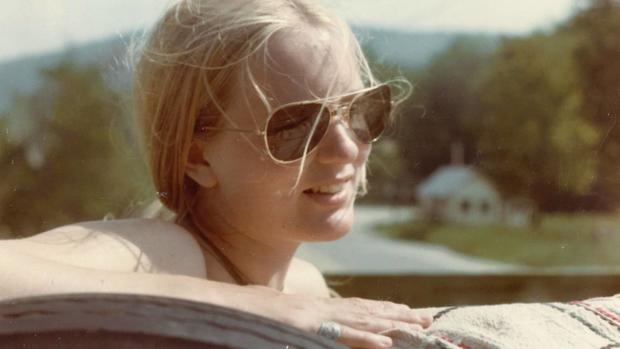




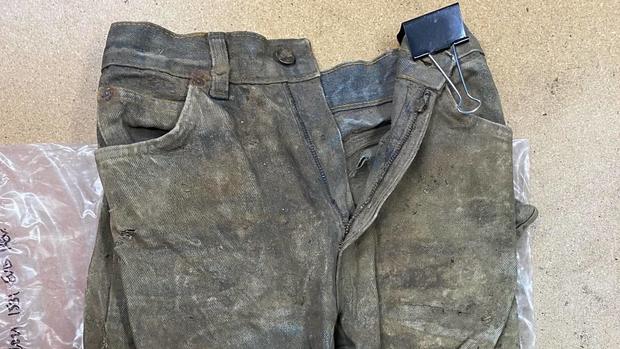


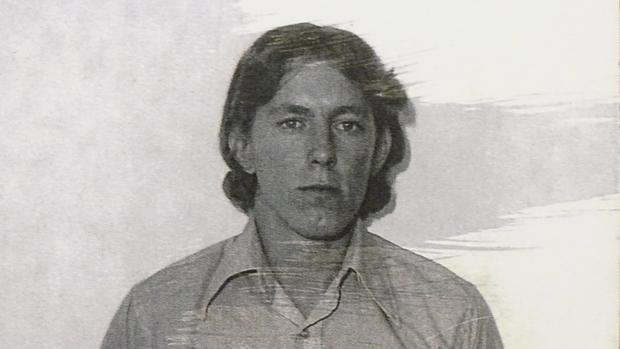

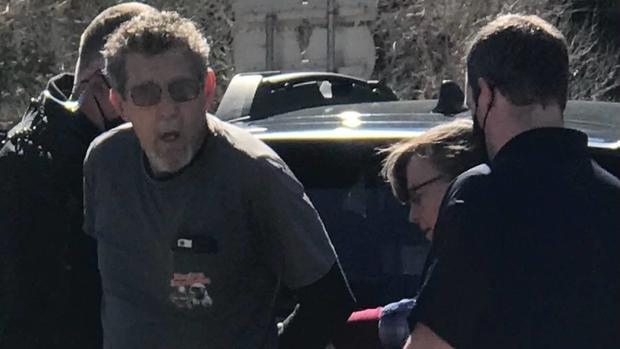
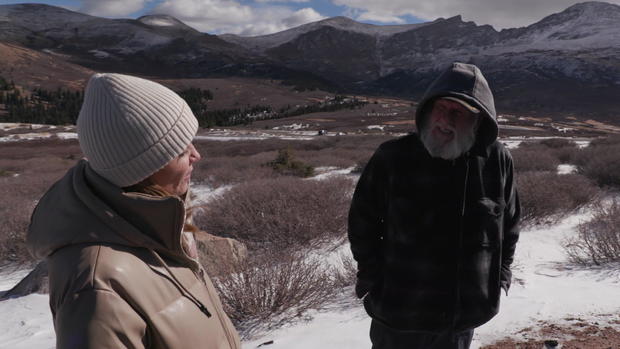
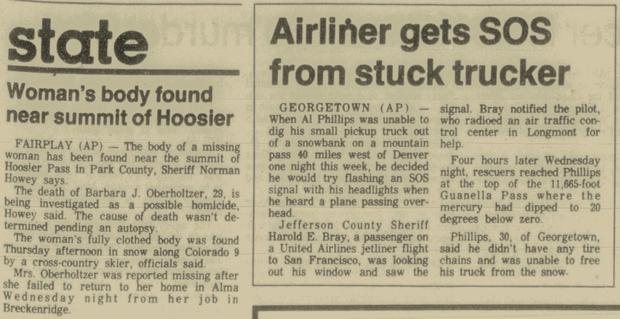
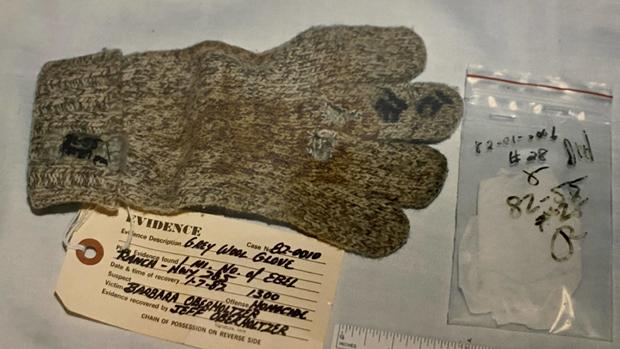
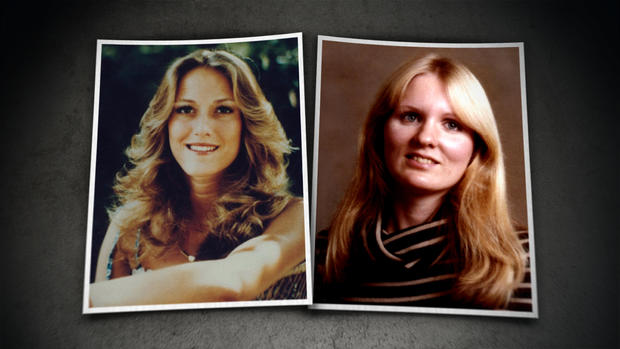
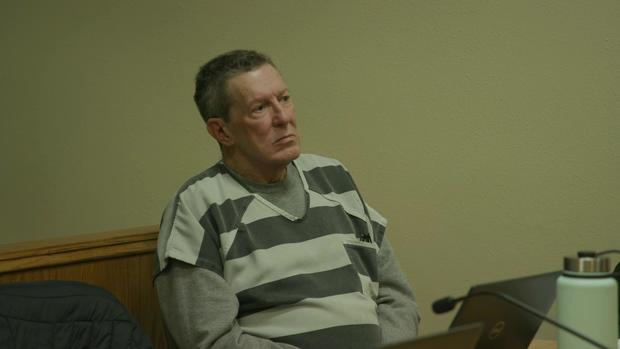



GIPHY App Key not set. Please check settings